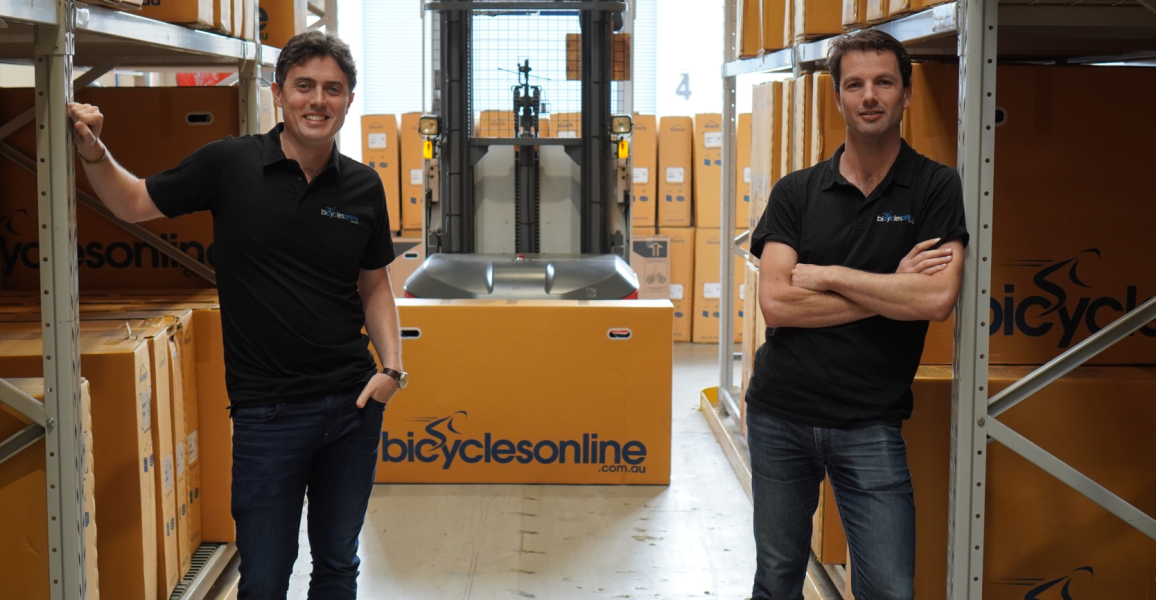How would you describe your leadership approach?
To be relentlessly focused on doing what is best for our merchants and helping them succeed in an omnichannel world. I’ve led with that strategy since I came in the door. We focus on one product, and we build that one product to be the best at enabling our merchants to handle complex ecommerce.
What are some of the common pain points your customers are looking to solve?
Number one: merchants want their brand presence and website to be beautiful, engaging, and generate high conversion rates. BigCommerce solves that two-fold: merchants can either design and manage a stunningly beautiful site using our design framework and themes, or they can use a third-party front-end option like WordPress or Bloomreach. We give merchants the flexibility to choose.
I’m especially proud of our native multi-storefront capability, which lets BigCommerce merchants create and manage additional storefronts for different brands, customer segments, geographies, languages, from within a single BigCommerce store.
How do you approach innovation as part of the overall BigCommerce strategy?
When I came to BigCommerce in 2015, we were the second largest SaaS ecommerce platform. It was clear that, if we kept doing what we were doing, we were always going to be No. 2.
I decided we were going to extend up-market and go after mid-market and large enterprises. Those businesses are complex. They use on-premise software. We set out to do SaaS where nobody's ever done it before, and make it as open and flexible as open source. But first, we had to decompose our entire platform into individual components. Merchants could keep using our individual components or use APIs to access third-party technologies like Stripe. Because of our advancements—essentially making BigCommerce the most open platform available—our merchants can innovate with us.
We set out to do SaaS where nobody's ever done it before, and make it as open and flexible as open source.
As you work to move up-market to support larger retailers, how are you building to better serve that audience?
The bigger a business gets, the more complex it becomes. We want to be the best in the world at helping merchants and more complex businesses grow larger through “open SaaS”: we do the hosting, the bug fixing, the security, and all the really hard things about managing and operating technology. But we do it with openness and flexibility to include APIs and connectors to adapt to what each business needs.
Our merchants can use whatever payment solution they want, whatever accounting solution, whatever marketing solution. In the past, complex businesses had to own and manage their own software to get enterprise-level functionality and flexibility. BigCommerce gives them everything coupled with the benefits of open SaaS.
You’ve really invested in the partner ecosystem at BigCommerce. How has that impacted your customers?
It’s always been our objective to have the best integrations with leaders of their individual categories.
With Stripe, for example, we take advantage of the most powerful, most modern capabilities Stripe makes available. For any merchant who says, “I want to take advantage of everything Stripe can do,” BigCommerce is a logical platform to work with because it’s pre integrated. By offering best-of-breed integrations, our customers get the best ecommerce platform for their needs in every category. That's the model we offer to the market: open, best-of-breed, best-suited for each individual customer.
How does Stripe align with your focus to deliver best-of-breed options to your customers?
Stripe is the most open and flexible of the payment solutions—and that’s coming from someone who has a lot of payments background from eight years at PayPal. One thing I've admired most about Stripe is the elegance and usability of its APIs that allow businesses to easily integrate with Stripe’s capabilities. That extends to mobile apps, ecommerce stores, and more. That notion of openness and flexibility is a shared value between BigCommerce and Stripe.
As a platform, I want to work with partners that bring something different and better to the world, and that have amazing integrations so that any business can take full advantage of them. A big part of our partnership with Stripe has been to make sure we are integrating all of Stripe’s best functionality and exposing those to our merchants around the world. For example, we're going really big with our integration into Stripe’s billing, subscriptions, and point-of-sale capabilities.
The final thing is, we're not going to charge merchants for using Stripe. Our merchants get Stripe’s very best capabilities natively at no extra charge.
As a platform, I want to work with partners that bring something different and better to the world, and that have amazing integrations so that any business can take full advantage of them.
How has BigCommerce used Stripe to support your overall growth goals?
We have a lot of goals where Stripe is helping us. Number 1 is with geographic expansion. Stripe keeps expanding the number of countries where it has really competitive local offerings. We look to add those to BigCommerce as quickly as they're available. Similarly, Stripe keeps adding new payment methods, too, and we reveal those as quickly as possible so merchants can configure their checkouts to include the ones most relevant to them.
I also mentioned that Stripe really innovates in places like subscription capabilities. Subscriptions are very important and powerful to a lot of our merchants. Point-of-sale capabilities are really important, too. Stripe’s checkout innovations and checkout experience add a lot of flexibility for BigCommerce merchants.
Finally, price competitiveness is fantastic with Stripe. Our merchants don't want to pay extra for credit card processing. A lot of the out-of-the-box pricing with BigCommerce is actually cheaper than what you’d find in the industry. That is very much appreciated by our shared merchants.
How are you scaling BigCommerce as businesses continue to adapt to the increasing shift to ecommerce?
The most important part of scaling is going global. We’re based in the US today, but were originally founded in Sydney so we have a huge presence in Australia. We've made big, big expansions into Europe. In Latin America, we've opened our first office but have plans to go more broadly across that region. We're also looking into Asia, the Middle East, and Africa. To drive our global expansion, we’re also focused on scaling our developer capacity. We have five development offices and we’re looking to continue growing that capacity around the world.
How will the ecommerce market look five years from now?
There are a bunch of changes that are really interesting for this industry. One is headless ecommerce, where merchants are unconstrained by which technology they use for the front-end customer experience and design. We want to do that better than any platform in the world. Another is omnichannel and maximizing a merchant’s ability to generate demand and sell everywhere—online, or offline in stores. This is reflected in our acquisition of Feedonomics, which is the best platform for getting product listings into Google, Facebook, every social network, every ad channel, and every leading marketplace. Another emerging opportunity is for merchants to do both B2C and B2B selling. We want BigCommerce to be a leader at enabling our merchants to support both consumer and business audiences.
What ecommerce trends are you seeing today as we emerge from more than two years of the pandemic, and what are your predictions for the future?
There was a boom in 2020 and early 2021 across the industry. Ecommerce adoption by both businesses and consumers was accelerated by a year and a half or so. In terms of breadth of adoption, how consumers think about their purchasing options, and how businesses think about the future, the aperture is way wider. People are shopping at far more places than they ever did before, and a higher percentage are shopping online.
My expectation is that the breadth of adoption will get even bigger. It's still the case that both for B2C and B2B ecommerce, we're in the 20% range of all purchasing, meaning 20% is online and 80% is offline. But if the market keeps growing at the same rate we’ve seen historically, the basis is much bigger, so we're gaining about two points per year. At that rate, it’ll only take five years to go from 20% to 30%. And, maybe just another five years to go from 30% to 40%. I envision that could end up approaching 40% to 50% for both B2C and B2B. That is just a radically different world and every business should be preparing for that end game.

